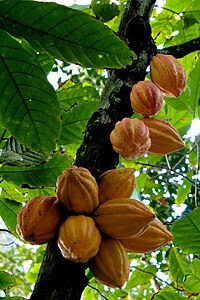
Photo from wikipedia
Forests in North America are threatened by a myriad of native and nonnative pests and pathogens, the latter of which are largely introduced via the international trade of raw wood… Click to show full abstract
Forests in North America are threatened by a myriad of native and nonnative pests and pathogens, the latter of which are largely introduced via the international trade of raw wood products and live plants. The early twentieth-century arrival of white pine blister rust (WPBR) (Cronartium ribicola) and chestnut blight (Cryphonectria parasitica) on imported seedlings devastated forests across North America. Invasive species notably affect entire genera. For example, WPBR has now infected all North American five-needle pine (Pinus) species across the entire United States, which has affected species of commercial and noncommercial value and threatened sensitive, high-elevation ecosystems (Sniezko et al. 2011, 2014, Sniezko and Koch 2017).
Journal Title: Journal of Forestry
Year Published: 2020
Link to full text (if available)
Share on Social Media: Sign Up to like & get
recommendations!